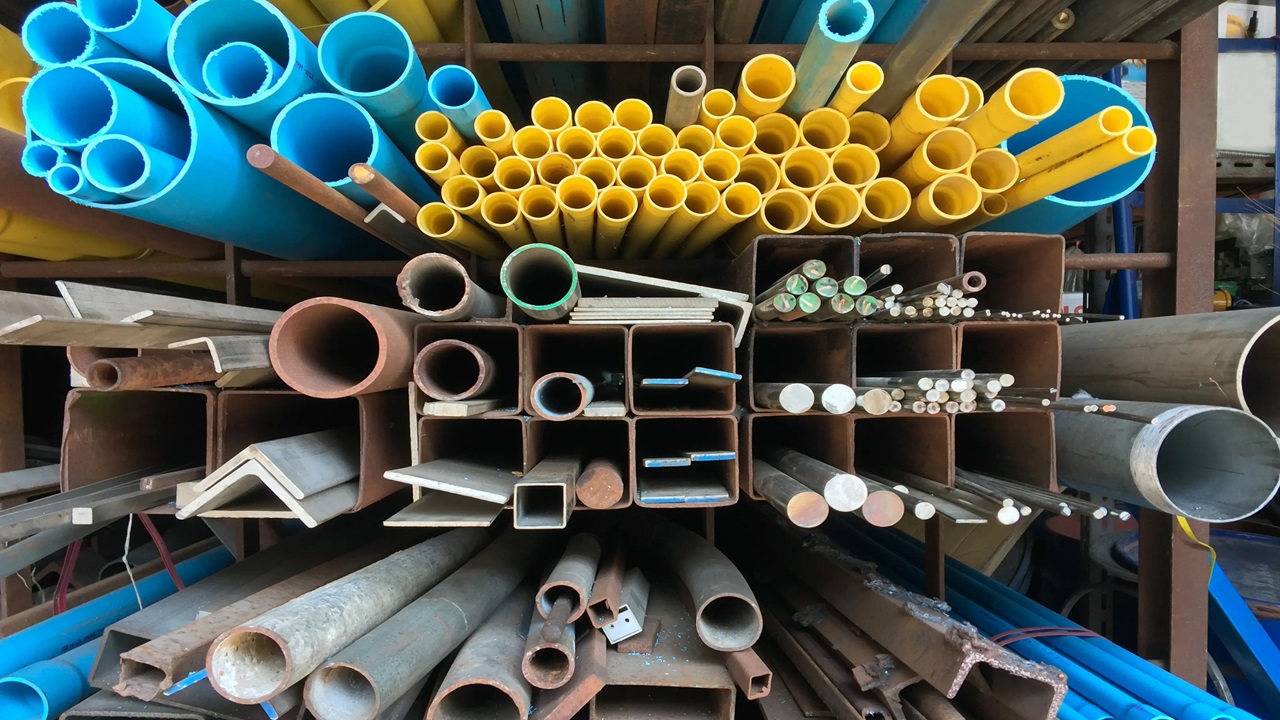Project type serves as the basis for steel pipe selection because steel products exist in multiple weights and dimensions. The weight requirements of different applications determine whether the steel pipes need to be lightweight or heavy-duty types that handle pressure conditions. The weight of pipes serves as a crucial factor because it affects both their operational strength, installation procedures, and total project costs. The guide provides information about Steel Pipe Weight Chart Per Foot/ Meter(Pipe Weight Chart) and selection criteria for various applications.
Understanding Steel Pipe Weight
Steel pipes acquire their weight through measurements of diameter size, wall thickness, and length. The weight of the pipe rises as its diameter enlarges because it needs additional material. The material becomes stronger with a thicker wall, yet the weight increases accordingly. Total weight calculations for project material requirements depend on pipe length because it directly affects the overall weight measurement. The weight measurement of steel pipe occurs either in kilograms per meter (kg/m) or pounds per foot (lb/ft). The maximum weight capacity of structures and systems depends on measurements made by engineers and builders.
Lightweight Steel Pipes for Everyday Use
When projects need to handle light loads, lightweight steel pipes should be selected as an optimal solution. The material is simple to move between sites and simple to set up and adapt. The material finds applications in plumbing systems, fencing installations, and furniture production. The plumbing sector uses lightweight steel pipes to transport water, gas, and other fluid materials. The installation process becomes simpler because lightweight steel pipes weigh less, which benefits residential building projects. The ease of handling lightweight steel pipes makes them ideal for fencing projects because they maintain sufficient support strength.
Medium-Weight Steel Pipes for Construction
The construction sector relies on medium-weight steel pipes to build scaffolding structures and support beams and handrails. The pipes deliver both structural integrity and convenient installation capabilities. These pipes deliver substantial bearing capacity without creating excessive weight that makes work difficult. Medium-weight steel pipes used in scaffolding construction enable safe access to different building levels. The combination of handrails and guardrails depends on these pipes to provide durability and safety in stairways, balconies, and walkways. Greenhouse structures use medium-weight pipes to support their structures without creating excessive weight in the overall frame.
Heavyweight Steel Pipes for Industrial and Structural Use
Steel pipes serve applications that require resistance against heavy loads and strong pressure requirements. The oil and gas industry, along with construction and mechanical engineering operations, depend on heavyweight steel pipes to fulfill their requirements. Heavyweight steel pipes possess thick walls combined with wide diameters that make them suitable for carrying heavy loads while resisting external pressures. Heavyweight steel pipes act as transportation systems that carry crude oil and natural gas throughout the entire oil and gas industry. The pipelines must survive operational pressures combined with severe weather conditions. Heavyweight pipes serve as structural elements for bridges, towers, and large buildings at construction sites. The provision of durable long-term performance and stability of heavy-duty industrial equipment and machinery relies on robust steel pipes.
How to Choose the Right Steel Pipe
The selection of steel pipe depends on the project's requirements. The first step requires checking the weight specifications. The selection of a thick, heavy pipe represents the best solution when project requirements demand robust support. When projects require both flexibility and simple handling operations, lightweight steel pipes prove to be the most suitable choice. The environmental conditions affect the selection process. The selection of outdoor pipes requires weather-resistant materials, whereas indoor pipes can function without additional protection. The application of galvanization coatings helps extend product lifespan by protecting against rust formation. Budget considerations represent a vital component, among other factors. The price of pipes increases when more material is required for their construction. Selecting a pipe with sufficient strength capabilities but minimal weight can help manage project expenses. Engineers, together with project managers, must evaluate various pipe weight options to determine which combination delivers the most effective results at reasonable prices.
Why Steel Pipe Weight Matters
The weight of pipes influences both transportation and installation expenses as well as total project expenditures. The installation process becomes less expensive when lighter pipes are utilized because they need fewer workers to handle them. Installation of heavier pipes requires specialized lifting equipment and tools to set them correctly. The identification of these factors leads to appropriate selection decisions that prevent wasteful spending. Weight is essential in the provision of safety when in use. The stability of a structure relies on the weight of the pipes utilized to construct it. Using excessively heavy pipes creates excessive structural strain. The correct weight of pipes delivers both safety measures and operational efficiency, and structural durability.
Conclusion
Project success depends on selecting appropriate steel pipe weights. Each steel pipe type exists for its designated purpose because weight selection determines its application between plumbing, furniture, and industrial usage. The comprehension of pipe weight enables builders, engineers, and manufacturers to select optimal solutions for their requirements. The selection of appropriate steel pipe materials leads to projects that operate more securely and efficiently while demonstrating increased strength.


